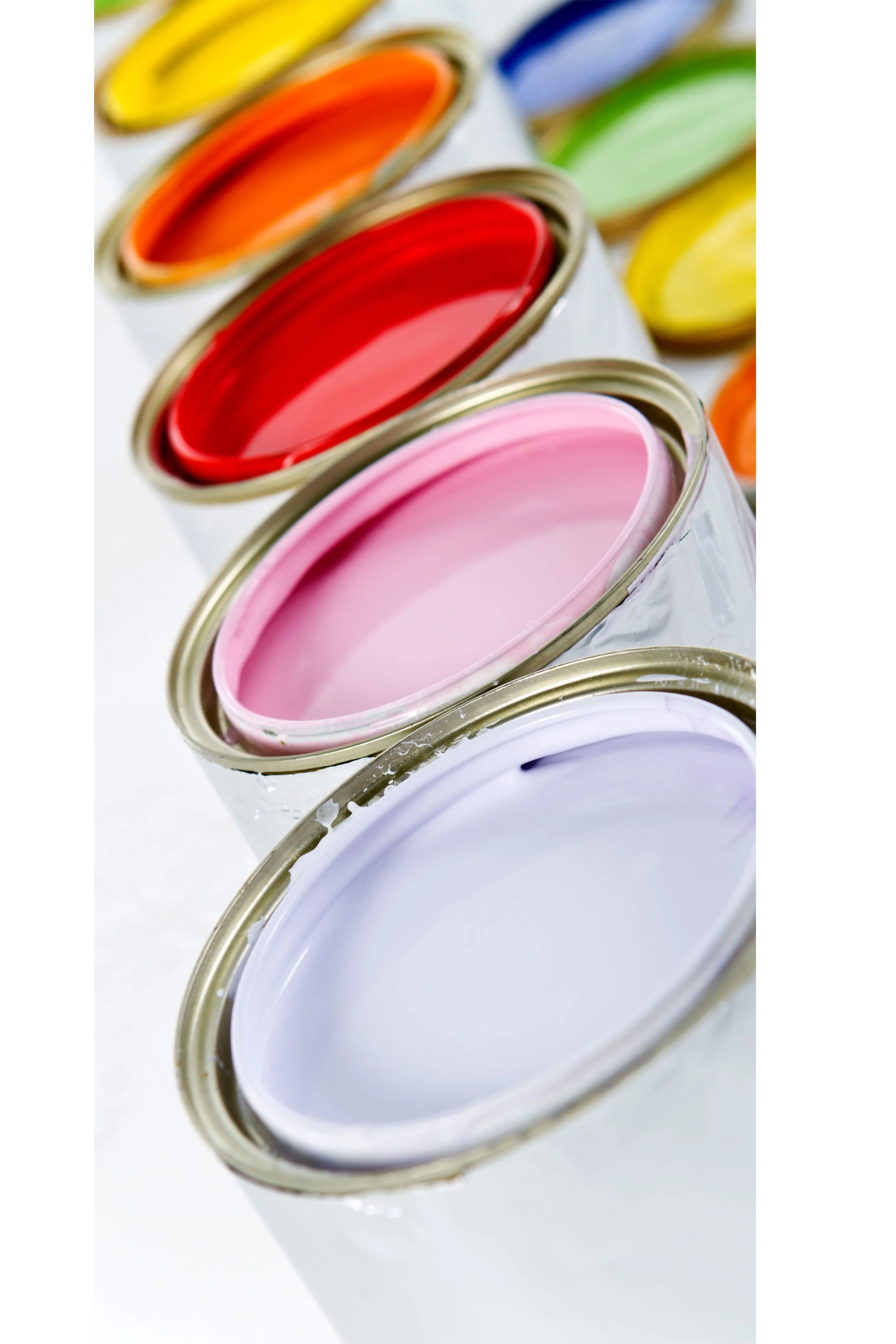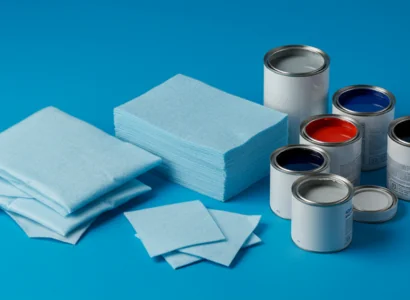
Shipping Paint
Reliable & Compliant Paint Shipping Solutions
Ship paint safely and efficiently with FreightCenter. From hazardous materials compliance to customized freight options, we simplify the paint shipping process. Get your free shipping quote today!
Related Articles for Shipping Paint and Hazardous Materials
Hazardous Materials Shipping Guide Shipping Chemicals and Hazardous Materials Shipping Cleaning Agents and Chemical Solvents Shipping Chemical Fertilizers and Agricultural InputsShipping paint through freight offers advantages such as efficient and reliable transportation, expertise in handling hazardous materials, the ability to accommodate larger quantities, and enhanced tracking capabilities. These benefits contribute to a smoother and more streamlined shipping process, providing peace of mind for both shippers and recipients of paint products.
We believe that FreightCenter is the ideal company to consider when shipping paint, offering the convenience of instant quotes, access to a diverse network of carriers, expertise in handling hazardous materials, flexibility in transportation modes, reliable customer support, and efficient tracking capabilities.
Thousands of businesses trust FreightCenter to move their freight faster, smarter, and cheaper! From unbeatable rates to top-notch service, our customers are raving about their shipping success.
See why they keep coming back!
Award-Winning Service, Trusted by Shippers Everywhere!
- 2021, 2017 & 2016 Food Logistics’ Top Green Providers
- 2021 & 2018 Supply & Demand Chain Executives’ Pros to Know: Matthew Brosious
- 2020 & 2019 Top Food Logistics’ 3PL & Cold Storage Provider Award
- 2020 & 2019 Business Observer’s Top 500 Companies on the Gulf Coast
- 2020 & 2017 SmartWay® Transport Partner
- 2020 & 2017 Food Logistics’ Champions: Rock Stars of the Supply Chain
- 2020 Best of Palm Harbor Awards for Local Businesses
- 2017 Green Supply Chain Award from Supply & Demand Chain Executive
- 2017 Tampa Bay Business Journal Heroes at Work
- 2016, 2015, & 2012 Food Logistics Top 100 Software and Technology Providers
- 2013 Tampa Bay Business 100 by Tampa Bay Business Journal
- 2013 Top 100 Great Supply Chain Partners by SupplyChainBrain
- 2012 TIA Samaritan Award Honorable Mention
- 2012, 2011 & 2010 TBBJ Fast 50 Recipient
- 2013, 2011, & 2010 Diversity Business Top Businesses

Choosing the Right Freight Company to Ship Paint
When shipping paint, partnering with a company that understands the unique challenges and regulations is crucial. Choosing a company with experience in handling hazardous materials, has the necessary equipment and facilities to handle paint shipments safely, has a good track record of complying with hazardous materials regulations, provides adequate insurance coverage for paint shipments, good customer support, and competitive pricing.
At FreightCenter, we understand the unique challenges and regulations of shipping paint. With our expertise, carrier selection, competitive rates, online platform, customer support, network coverage, and tracking capabilities, you can rest assured that your paint will be transported safely and efficiently.
How Much Does it Cost to Ship Paint?
Freight rates are not standardized and can vary based on several factors. Our team works closely with you to secure competitive rates tailored to your specific needs.
Key cost factors include:
- Distance: The further the destination, the higher the transportation cost.
- Weight and Volume: Larger and heavier shipments may increase the overall shipping cost.
- Transportation Mode: Costs can vary between LTL, FTL, air, or ocean transport.
- Additional Services: Requirements like expedited shipping, special handling, or documentation assistance can affect pricing.
To receive the most accurate quote, provide FreightCenter with detailed information about your shipment’s weight, dimensions, origin, destination, and any unique requirements. Our freight experts will guide you through the process, helping to optimize your shipping strategy while keeping costs manageable.
How to Ship Paint with FreightCenter
Shipping paint requires careful planning, the right packaging, and strict adherence to regulations. At FreightCenter, we simplify this process for businesses of all sizes, ensuring your paint shipments are compliant, secure, and cost-effective.
Understand Legal Requirements
Paint is often classified as hazardous, so it’s essential to comply with local, national, and international standards. We guide you through packaging, labeling, and documentation requirements to ensure your shipment meets all legal obligations.
Choose the Right Packaging
Selecting proper packaging is critical for safe paint transportation. FreightCenter recommends:
- Leak-Proof Containers: Use metal or plastic containers designed for hazardous materials.
- Secure Sealing: Ensure lids are tightly sealed to prevent leaks during transit.
- Secondary Packaging: Place containers in plastic bags or use absorbent materials to contain potential spills.
- Stabilization: Cushion and secure containers using bubble wrap or foam to minimize movement and breakage.
Proper Labeling and Documentation
Clear and accurate labeling is essential for safe handling. FreightCenter assists with:
- Hazard Labels: Including the paint’s name, hazard class, and handling instructions.
- Documentation: Ensuring all necessary paperwork is prepared, such as:
- Bill of Lading
- Safety Data Sheets (SDS)
- Hazardous Materials Shipping Papers
- Export/Import Documentation (if applicable)
Arrange for Safe Transportation
We help you choose the best transportation method, whether it’s less-than-truckload (LTL) or full truckload (FTL). We consider factors like distance, speed, and regulatory requirements to ensure a safe and efficient delivery.
Prioritize Safety Guidelines
Safety is our top priority. We ensure shipments comply with:
- Hazardous Materials Regulations
- UN Packaging Standards
- IMDG and IATA Codes for sea and air transport
- Local restrictions and regulations
FreightCenter offers specialized freight services to meet the unique challenges of shipping paint. Whether you're moving small batches or large volumes, we provide the best solutions across multiple transportation modes, ensuring safety, compliance, and cost-efficiency.
For smaller shipments of paint, Less-Than-Truckload (LTL) shipping is an efficient and reliable option. This method allows you to share trailer space with other shipments, reducing costs while ensuring that your paint is handled with care. It's ideal for smaller batches, such as retail supplies or residential deliveries.
When transporting larger quantities of paint, Full Truckload (FTL) shipping offers the most efficient solution. Your paint shipment will have exclusive use of the truck, minimizing handling and reducing the risk of cross-contamination. FTL is perfect for bulk shipments to retailers, distributors, or construction sites. Specialized trailers, including temperature-controlled options, are available for sensitive paint products.
When deadlines are tight, Expedited Freight Services guarantee fast, reliable delivery. Whether it’s an urgent stock order for a job site or last-minute inventory replenishment, expedited shipping prioritizes speed without compromising safety. Your paint shipments will be transported rapidly to meet critical timelines, with specialized handling that ensures hazardous materials like paint are securely managed.
Certain paint shipments require extra care, whether due to size, sensitivity, or specific regulatory requirements. Specialized Freight Shipping ensures proper handling for delicate, oversized, or hazardous paint shipments. We provide custom packaging solutions that minimize risks during transportation and ensure full compliance with hazardous material regulations, including proper documentation and labeling. Climate-controlled options are available for temperature-sensitive paint products, ensuring they arrive in perfect condition.


Did You Know Paint is Temperature Sensitive?
Many types of paint are sensitive to extreme temperatures. Exposure to heat can cause paint to dry out or spoil, while freezing temperatures can cause separation or ruin the product. It’s essential to consider climate-controlled transportation if shipping during extreme weather.
Shipping Paint FAQ
Q. Can I ship paint with FreightCenter?
Yes, FreightCenter specializes in helping businesses and individuals ship paint safely and efficiently while ensuring compliance with hazardous materials regulations.
Q. Is paint considered hazardous for shipping?
Most types of paint are classified as hazardous materials due to their flammable or chemical properties. FreightCenter helps you meet all regulatory requirements for safe transport.
Q. What is the best way to package paint for shipping?
FreightCenter recommends using leak-proof metal or plastic containers, ensuring lids are tightly sealed, and adding secondary packaging like absorbent liners or plastic bags for extra protection.
Q. Do I need special labeling to ship paint?
Yes, paint shipments must be clearly labeled with hazard symbols, the UN number (e.g., UN1263 for flammable paint), and handling instructions. FreightCenter can guide you through this process.
Q. How much does it cost to ship paint?
Shipping costs depend on factors like distance, weight, volume, transportation mode, and additional service requirements. FreightCenter provides customized quotes to match your specific shipping needs.
Q. What documentation is required to ship paint?
FreightCenter ensures you have all necessary paperwork, including the Bill of Lading, Safety Data Sheet (SDS), hazardous materials shipping papers, and any required export/import documentation.
Q. Can FreightCenter help with international paint shipping?
Yes, FreightCenter has expertise in international shipping, ensuring compliance with global regulations like the IMDG Code for sea transport and IATA standards for air transport.
Q. How do I ensure my paint shipment doesn't leak during transit?
FreightCenter recommends using certified leak-proof containers, sealing them properly, and using absorbent liners to minimize the risk of leaks.
Q. What happens if my paint shipment is delayed or damaged?
FreightCenter provides real-time tracking and dedicated support to minimize delays and resolve issues promptly. We also advise on proper packaging to reduce the risk of damage.
Q. Are there restrictions on shipping certain types of paint?
Yes, some types of paint may be restricted due to their hazardous nature. FreightCenter helps you verify which types can be legally shipped and ensures proper documentation.
Q. How far in advance should I schedule my paint shipment?
It’s best to schedule shipments as early as possible, especially for large or international shipments. FreightCenter can assist with planning and optimizing timelines.
Q. Can I track my paint shipment with FreightCenter?
Absolutely! FreightCenter provides real-time tracking tools so you can monitor your shipment’s progress from pickup to delivery.
Q. Do I need insurance for my paint shipment?
While not mandatory, FreightCenter recommends insuring your paint shipment to protect against loss or damage. We can assist you in arranging the right coverage.
Q. What is the safest transportation mode for shipping paint?
FreightCenter helps you determine the best mode of transportation based on the type of paint, destination, and urgency, whether it’s LTL, FTL, air, or sea freight.
Q. How can FreightCenter help reduce paint shipping costs?
We offer cost-saving strategies like consolidating shipments, negotiating volume discounts, and helping you select the most efficient carriers and routes.
Three Helpful Tips for Shipping Paint

Use Absorbent Liners for Extra Protection
Placing absorbent liners or pads inside the packaging can help contain leaks if a container is compromised during transit. This not only minimizes mess but can also help avoid regulatory violations related to hazardous materials spills.

Account for Vapor Pressure in Hot Weather
In high temperatures, paint containers can build up vapor pressure, increasing the risk of leaks or ruptures. Leave a small amount of headspace in the container and use pressure-resistant packaging to help prevent this issue during summer shipments.

Plan for Return Logistics
If you're sending paint samples or expecting returns, prepare for reverse logistics. Ensure that return packaging is equally compliant and secure, and inform the recipient about how to safely and legally return paint shipments.

